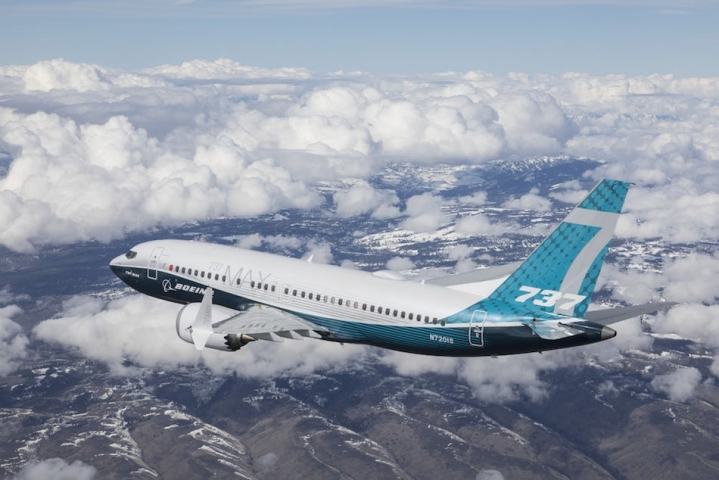Boeing’s latest 737 MAX passenger aircraft took to the skies for the first time on Friday, March 16. The successful test flight means the plane is on course for delivery to its first customers next year.
The single-aisle 737 MAX 7 joins the larger MAX 8, 9, and 10 in Boeing’s MAX family, and can carry up to 172 passengers. At 3,850 nautical miles, this latest model has the longest range of any MAX aircraft.
Boeing’s first MAX plane was flight tested at the start of 2016 and is the latest iteration of the company’s successful 737 aircraft, which first went into service in 1968.
Friday’s test flight was piloted by Boeing test and evaluation captains Jim Webb and Keith Otsuka, and lasted just over three hours. Taking off from Renton Field in Renton, Washington, and landing at Seattle’s Boeing Field, the new aircraft was put through its paces with a range of tests on its flight controls, along with checks of its systems and handling qualities.
“Everything we saw during today’s flight shows that the MAX 7 is performing exactly as designed,” said Keith Leverkuhn, vice president and general manager of the 737 MAX program.
Boeing claims “superior performance” over the competition with the MAX 7, pointing out that the plane can carry 12 more passengers 400 nautical miles farther than the A319neo, on 7 percent lower fuel costs.
The 737 MAX planes incorporate the distinctive Advanced Technology split-tip winglets with a downward-pointing aerofoil that works to maximize the overall efficiency of the wing. They’re powered by the latest CFM International LEAP-1B engines featuring a carbon fiber fan blade and titanium leading edge. Chevrons at the rear of the engines serve to reduce the aircraft’s noise footprint.

The pilots can access all of the important flight information via four displays (pictured above) that are considerably larger than those found on the MAX’s predecessor (the “Next Generation”), thereby offering a less-cluttered layout for easier data interpretation.
Passengers can make use of touchscreen attendant control panels and enjoy the comfort of wider seats, while redesigned overhead bins with a slight vertical expansion creates space for more bags so you won’t have to head farther down the plane in search of somewhere to put your carry-on luggage.
It’s features like these that have helped the 737 MAX to become the fastest-selling airplane in Boeing history, so far securing more than 4,300 orders from 93 carriers around the world.
Editors' Recommendations
- Intel Core i7-12800H CPU outperforms Apple M1 Max in new benchmark
- Boeing 737 Max back in service 2 years after crashes grounded global fleet
- Boeing’s beleaguered 737 Max completes first flight in 15 months
- Boeing has restarted production of its troubled 737 Max jet
- Boeing 737 Max: Debris found in some of the jets’ fuel tanks

